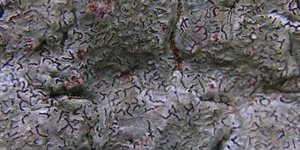Interesting Paper on Nitrogen Tolerance in Lichens
Jan-Peter Frahm has an interesting new paper on the potential mechanism by which nitrogen deposition impacts directly on lichens. Nitrogen tolerance in lichens is hypothesised not to be based upon the higher facility for nitrogen uptake but osmotic tolerance against the salt effects of nitrogen compounds, with nitrogen intolerant species having a low osmotic tolerance. The higher osmotic values of nitrophilous lichen species lead to the conclusion that they are also drought resistant species and occur in regions with low humidity where they are more competitive than other lichen species.
This also presumably explains why costal epiphytic lichen communities are dominated by species that are also nitrophilous.
Direct link to paper: Volume 9
Notice from Dr. Felix Schumm about the paper:
www.archive-for-lichenology.deDear Lichenologists, please notice the new Vol 9 in the
Jan-Peter Frahm (2013): Contents of amino acids and osmotic values of epiphytic lichens as indicators for regional atmospheric nitrogen loads Abstract: The amino acid content (alanine/arginine, glutamine, proline, taurine) of five different lichen species (Evernia prunastri, Hypogymnia physodes, Parmelia sulcata, Physcia adscendens, Xanthoria parietina) from different parts of Germany and NW France with different atmospheric nitrogen depositions was determined.The study revealed that the so called nitrophytic lichen species (Physcia adscendens, Xanthoria parietina) had no higher amino acid contents as compared with the other species. The amino acid contents of five different lichen species from the same tree varied without regard to the nitrophily of the species. The contents of amino acids of the lichen species studied from Bonn is four to twelve times higher as in the same species in the Vosges Mountains, France. The amount of amino acids in nitrophytic species (Xanthoria parietina, Physcia adscendens) from a region with high load of atmospheric nitrogen (35 kg/y/ha) is in average 5 times higher than in the same species from a region with low nitrogen immission (16 kg/y/ha). It can be concluded that the amino acid contents of lichens reflects the atmospheric nitrogen load and that the amino acid content of so called nitrophytic lichen species is not higher as in other species, that lichens are passive sampler and take up the available nitrogen but make no use of it but store it as amino acids. On the other hand, the conductivity of the cell liquid (as a measure of the osmotic pressure) of nitrophytic lichen species is higher as compared with non-nitrophytic species. Thus the “nitrophily” of these species is presumably not based upon the facility to higher nitrogen uptake but osmotic tolerance against the salt effects of nitrogen compounds. Within nitrophytic species, the osmotic values of Phaeophyscia orbicularis are double as high as those from Physcia adscendens, which is explained by the higher tolerance of Phaeophyscia against dry deposition. The higher osmotic values of nitrophilous lichen species lead to the conclusion that they are also drought resistant species and occur in regions with low humidity where they are more competitive than other lichen species.
Neil Sanderson 19/7/2013



